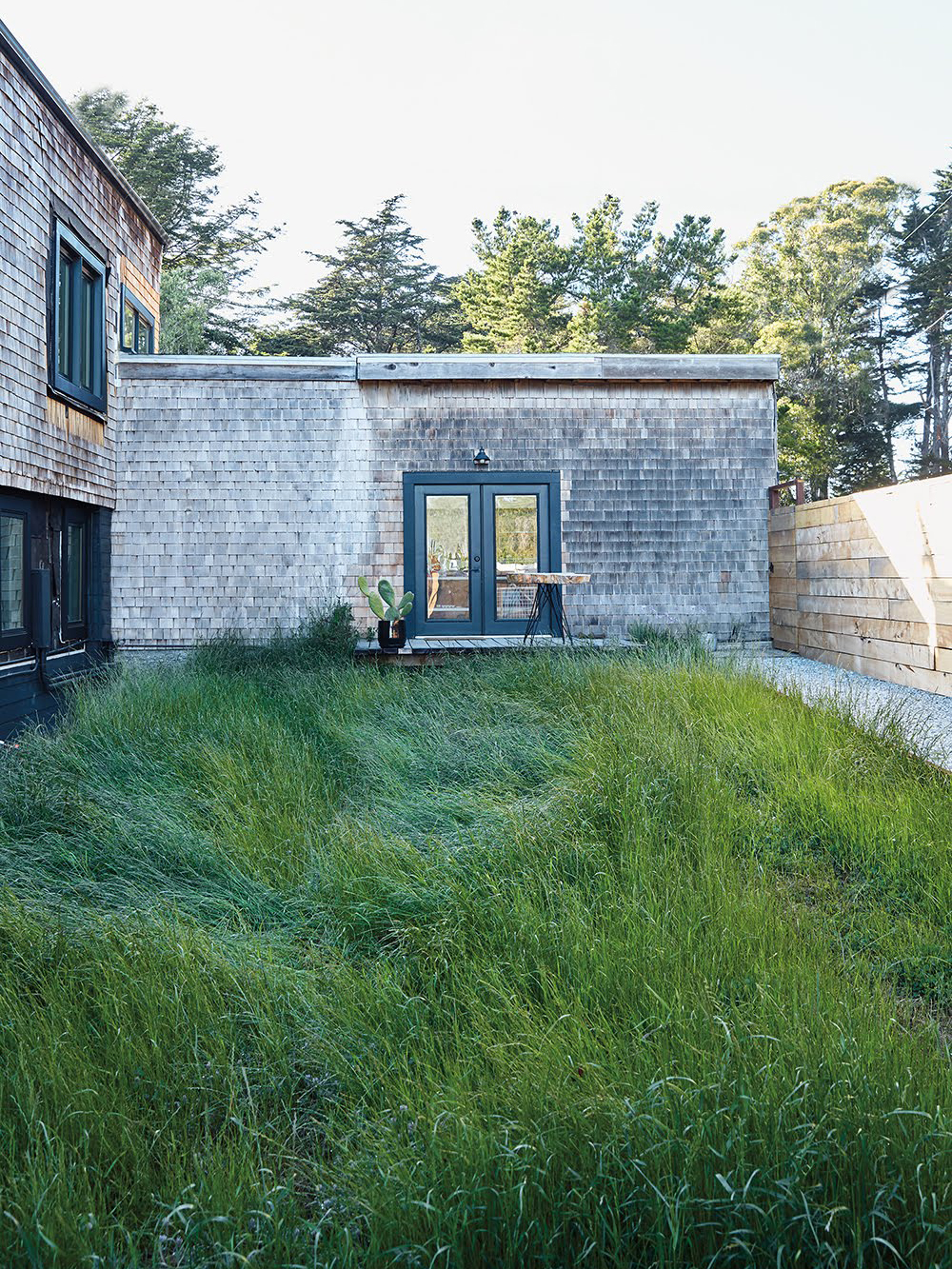We may earn revenue from the products available on this page and participate in affiliate programs.
It’s an image that has been both idealized and homogenized: houses in neat rows, each with its own verdant front yard, sometimes with a picket fence around the perimeter. It’s tough to imagine a classic American home without picturing a lawn—but there’s plenty of good reasons to think outside the grassy box.
Here are some mind-blowing stats to consider: Lawns are the largest irrigated crop in the United States, more than corn or wheat. Nationwide, more than 7 billion gallons of water per day are used to keep them looking fresh. And that’s not to mention the 2.4 million metric tons of fertilizer that go into them every year either.
The grass isn’t always greener on the other side—in fact, it’s not even grass. Meadows and gardens make for aesthetically pleasing alternatives that also come with eco-friendly benefits. They can help sustain native wildlife—which is why some states, like Minnesota, are offering grants as incentives for people to make the switch—and reduce the need to rely on pesticides or fertilizers (which you’d likely need to keep your grass looking pristine). Plus, you can use your mower less, an activity which Los Angeles–based landscape designer Jacky Surber of Urbafloria notes isn’t the best thing for your carbon footprint (if you have a traditional yard, you have to mow it regularly to combat ticks and mosquitoes, as Jesse Terzi of New Eco Landscapes points out).
Admittedly, getting rid of your lawn won’t necessarily make your life easier or cost you any less up front. In fact, it can be an investment to make the change. But if you’re looking for ways to get the most out of the outdoor space you have, reduce your environmental impact, and get back in touch with nature, it might be well worth the effort. Here are your next steps.
Find Your Local Match
“Adjust your ideas of what kind of vegetation a lawn encompasses,” says Shannon L. McWalters of Minneapolis’s Light Dark Landscape. She recommends looking for native species of ground cover (ask for suggestions at your local garden center) that are better suited to survive in your environment, and mixing in some clover and creeping thyme for a healthy, biodiverse patch of green. She likes to plant no-mow fescue seeds, which have a softer, slightly more grown-out look than your typical turf. Depending on where you live, other native sedge grasses can have a similar effect.
When in doubt, look to nature for inspiration—a meadow of flowers woven in with grass covers ground similarly to a lawn, but with less mowing required. That doesn’t mean it’s totally easy, though—in fact, a turf alternative can be more (but a different kind of) work, at least for the first year or two. “You’re not mowing it every week, but maybe you’re spending a Saturday once a month weeding or pulling out old grassroots that are trying to come back,” Surber says.
Get Gardening
Who says you have to relegate your herbs or perennials to the backyard? Especially if it gets good sun, your front lawn is the perfect spot to plant a garden. Terzi arranges native plants and wildflowers where there would otherwise just be grass. “A landscape designer would help, but most people can DIY it by just removing the lawn with a shovel and planting themselves,” he says.
For a low-maintenance (read: no mowing) option, McWalters works with low-growing shrubs. “We often plant them in organized swaths, contrasting two or three species with different foliage to offer texture and color variation while keeping weeds at bay,” she says. For this route, consider tapping an expert.
If your climate allows for it, an xeriscape is another great alternative. Basically, it’s a type of garden that requires little to no watering and uses decomposed granite in between plants. “It encapsulates a desert look,” explains Allison Messner, cofounder of landscape design service Yardzen.
Don’t Overdo the Gravel
Especially if you don’t live in a desert, use gravel sparingly—really just for pathways or patios (places where you might consider using concrete instead). “It’s not a great material to cover your garden with because it absorbs a lot of heat and then releases it back into the environment so that it can’t cool off at night,” says Surber. “Those higher nighttime temperatures really affect insects and birds—not to mention they’re going to increase your heating bill.”
It can also be more high maintenance than expected; it requires a fair bit of leaf blowing to keep it looking neat (which can also eventually deplete the soil beneath it). Because it’s sourced from quarries or riverbeds, it’s not an entirely renewable resource either—so if sustainability is a top concern, use it only where you really need it.
Start Small
Totally nixing your lawn is an admittedly intimidating task—but “why not cap off a couple of sprinklers and just experiment?” Surber suggests. “Instead of doing it all at once, a lot of people have success slowly shrinking their lawn. See what works for you.”
